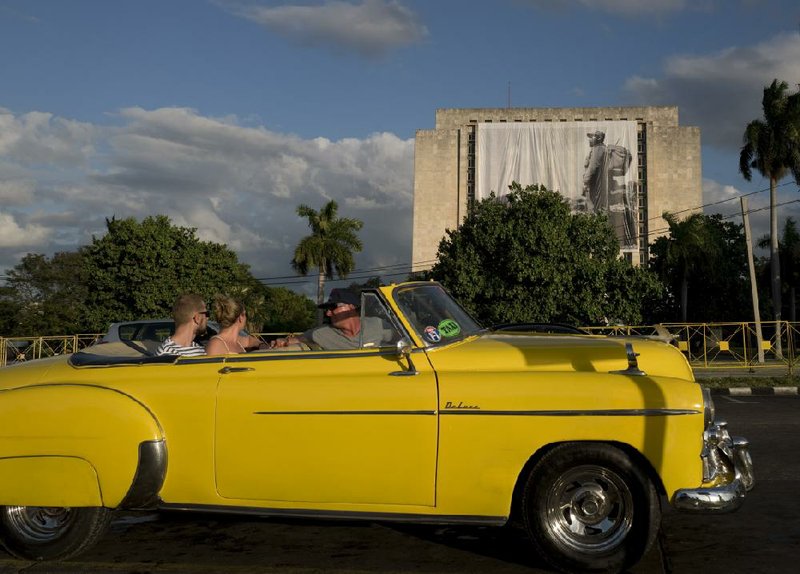MIAMI -- For $2.5 million, a foreign investor can help create an international equestrian club in the province of Havana or plunk down $10 million to create a network of eco-lodges across the island with a Cuban partner.
For an estimated investment of more than $15 million, the welcome mat is out for a potential manufacturer of air-conditioning equipment in Cuba's Mariel Special Economic Development Zone, and investors are also invited to negotiate the right to set up a plant capable of producing 10,000 light automobiles a year at the zone.
These are just a few of the 395 joint-venture projects, management contracts and other economic partnerships that Cuba is offering foreign investors in the latest edition of its portfolio of opportunities, released last month.
Under Law 118, Cuba revamped its foreign investment code in 2014, even allowing investors to set up factories with 100 percent foreign capital. Although the law offered tax breaks and other benefits to investors, foreign companies still can't directly hire Cuban workers and must go through a government agency for their labor needs.
But as Cuba courts foreign investors from around the globe, U.S. businesses might be getting further behind in their tentative efforts to make inroads in Cuba. President-elect Donald Trump has said he might reverse Obama administration rules that allowed a rapprochement with Cuba unless the island's leaders respect human rights and release political prisoners. And that throws even more uncertainty into the equation.
Meanwhile, the Cuban government is forging ahead with efforts to attract foreign capital. In addition to the Mariel zone and tourism, the new investment portfolio also includes projects in the agriculture, sugar, energy, mining, transportation, biotech/pharmaceutical, health, construction, business services, telecommunications, banking, and finance and industrial sectors.
The investments that Cuba is courting include foreign capital for a clean, energy-efficient soybean processing plant and soy oil refinery. It would require an investment estimated at $149 million.
The government would also like to attract hundreds of millions of dollars to set up various biotech factories.
A joint venture partner for Cuba's CIMEX to build and operate a wholesale operation for food and industrial products is also on the government's wish list. Cuba's private business sector has long complained about the difficulty of finding products for their businesses at wholesale prices.
"There is now a new set of priorities for foreign investment. Foreign companies know what Cuban companies are looking for, so there can be a match," said Carlos Gutierrez, secretary of commerce in the George W. Bush administration and now chairman of the Albright Stonebridge Group, a commercial diplomacy and strategic advisory firm.
All of the projects in the Cuban portfolio have been thoroughly studied and are ready to go as soon as suitable foreign partners and capital are found, said Rodrigo Malmierca, Cuba's minister of foreign trade and investment.
Until the 1990s -- when the collapse of Cuba's benefactor, the former Soviet Union, sent its economy into crisis, forcing it to make its first overtures to foreign investors -- Cuba wasn't really interested in reaching out to the world for investment. But Malmierca emphasized that Cuba's increased interest in foreign investment now "isn't a necessary evil." Instead, he said, it's a cornerstone of Cuba's current development strategy.
In addition to financing projects that will create jobs and help Cuba realize its goals of broadening export markets and replacing imports, Cuba also wants foreign investment to increase its access to state-of-the-art technologies and management practices.
"The idea is to make Cuba a producer of products that were imported for domestic use and eventually a net exporter," said Saul Cimbler, a Miami-area businessman who is working on joint venture deals with Cuba for himself and clients. "The whole idea is to make Cuba self-sufficient."
Helping raise Cuba's profile as a foreign investment target: The renegotiation of $2.6 billion in debt to the 14 wealthy nations that comprise the Paris Club and making the first installment on that renegotiated debt ahead of schedule in October.
Some of the larger Paris Club creditors, including Japan, Spain, France and Italy, also have worked out bilateral deals so that some debt payments are deposited in Cuban accounts for use in joint development projects on the island.
So far, Cuba has received the heftiest dose of foreign capital in the tourism industry. The island is poised to receive an estimated 3.8 million foreign visitors this year.
Cuba estimates that to reach a goal of 7 percent economic growth annually, it will need foreign investment of around $2.5 billion each year. Since Law 118 went into effect in early 2014, Cuba has attracted $1.3 billion in investments, Malmierca said.
But in November, Cuban media reported that two big foreign investment projects had broken ground at the Mariel zone: a joint venture of Unilever and Cuba's Intersuchel to build a $35 million factory that will turn out shampoo, deodorant, Lux soap, Omo detergent and Close-Up toothpaste and also BrasCuba Cigarillos, a Cuban and Brazilian joint venture that will make Popular, Cohiba and H. Upmann cigarettes in a $100 million state-of-the-art factory.
Last summer, two French companies -- Bouygues Batiment International and Aeroports de Paris -- also were granted concessions to manage and renovate Havana's Jose Marti International Airport and the aerodrome of San Antonio de los Banos, in Artemisa. Details of the contract are still being worked out.
The U.S. opening toward Cuba, which began in December 2014, also seems to have spurred other nations around the world to take a second look at Cuba in the belief that the next step would be lifting the U.S. embargo, increasing competition for prime Cuban investment opportunities.
Business on 12/06/2016
